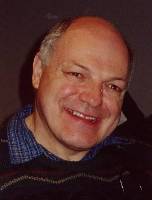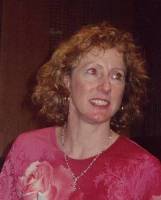


Venomous Country
Participants
Venomous Country
Endnotes
Index
Search
Help
Contact us

Ken Winkel: Thanks Peter. Perhaps now we'll turn back to the CSL team. I'm interested in how the team evolved to be working on toxins. How did Struan bring you into the fold?
Rodney Harris: He certainly had a high profile at the time and, I suppose, because you could see Dr Sutherland on the television every now and then, he was almost the public face of CSL in some respects. To actually work in his Department was sought after.

Photograph courtesy of Ann Westmore
Susie Kennewell: What about the cream cakes? He was always taking cakes in for his staff, did that have anything to do with it? [Laughter]

Photograph courtesy of Ann Westmore
Rodney Harris: No, I don't think the other people outside the Department really knew what it was like within the Department. Once you were part of the Department you were aware of what was happening. From my point of view, I don't know if there was any selection process. Certainly someone at my level coming in, if you were competent doing the bench work, I think that was important.
Alan Coulter: I think Struan was lucky in that when he started at CSL Bill Lane, who had a lot of sympathy for his cause, was the Director.{61} He got a lot of support from him, but when Bill Lane left, that's when a lot of his problems really started. CSL had its own agenda and making antivenoms wasn't making money. They (the CSL executives) may have been right. But Struan had his beliefs, as well, and he stood up to them.
Robert Premier: I think it went wider than that. Struan wasn't paranoid. I actually witnessed some instances where there was a lot of jealousy in other parts of CSL.
Ken Winkel: So when thinking about what allowed Struan to undertake the breadth and depth of research and what led to the success in the 1970s, are you saying that you think he was in the right place at the right time with Bill Lane, a very public service-oriented medical heavy executive at that time. But that if Struan had arrived 10 years later, with the winds of change that happened, it just wouldn't have happened. Is that your perception?
Alan Coulter: Ten years later, I don't think it would have happened, no. I think the way the research came about was that Struan had a real interest in venomous creatures as everybody knows and he brought that to CSL. There were other people there who had an interest in snake venoms and other things, but he started to gather a group around him that could help him expand the interest and look into problems that hadn't been looked at before ... problems like first aid for snake bite and funnel web treatment. I suppose the other thing that was really useful at that time was the assays that were coming on board. Radioimmunoassay was a fairly new invention about then, in the late 1960s and early 1970s. And also CSL was one of the first institutes in Australia to have enzyme immunoassays up and running and it turned out to be very useful for snake venom detection.
 |
Witness to the History of Australian Medicine |  |
© The University of Melbourne 2005-16
Published by eScholarship Research Centre, using the Web Academic Resource Publisher
http://witness.esrc.unimelb.edu.au/082.html